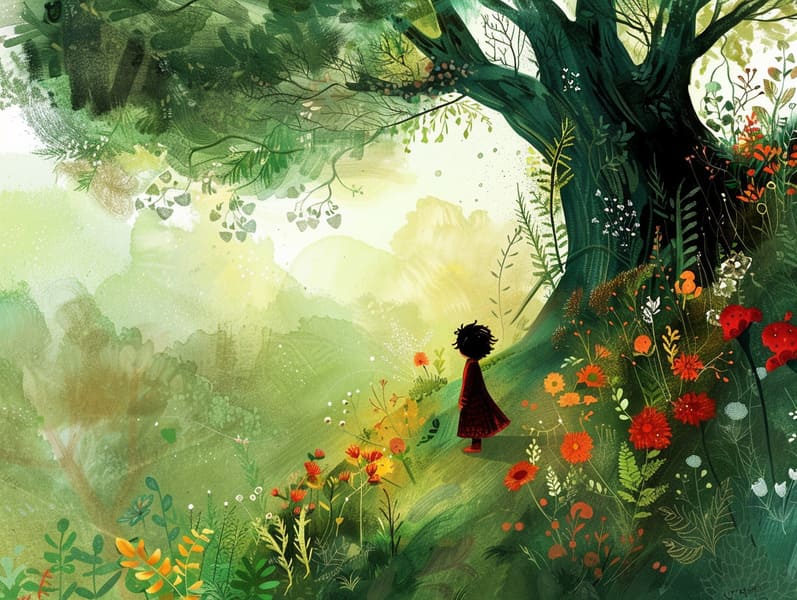Delving into the Background of Famous Fairy Tales and Its Immortal Delight.
Delving into the Background of Famous Fairy Tales and Its Immortal Delight.
Blog Article

Children's fairy tales have deep roots. These tales have been spoken from one generation to the next long before they were ever put on paper. They developed from a variety of civilizations, including Indigenous traditions. They were initially shared among mature audiences, often carrying themes and messages mirroring the societal norms and beliefs of the time.
The Brothers Grimm, Jacob and Wilhelm Grimm, were among the first to compile many of these beloved stories. Their volume, "Grimm's Fables," included tales like "The True Bride," "Little Brother and Little Sister," and "Snow White," which have since become classics in the world of children's fairy tales. Similarly, H. C. Andersen's whimsical stories, such as "The Sea Maid," and "The Story of the Ugly Duckling," have captured hearts worldwide, cementing their place in the pantheon of treasured fairy tales.
Despite their ancient origins, these tales remain as significant as ever, especially as children's bedtime stories. These fantastical tales are now available in numerous formats, including vibrantly illustrated books, whimsical animations, and digital storybooks.
Their ongoing significance can be credited to several enchanting factors:
Crucial Morals: Ancient fairy tales often share important moral lessons. Stories like "The Story of the Boy Who Cried Wolf" teach the merit of sincerity, while "The Tortoise and the Hare" exemplify the virtues of steadfastness and modesty. These stories offer young readers clear distinctions between moral and immoral, developing their moral compass in a soft yet meaningful way.
Compassion and Knowledge: Traditional fairy tales frequently depict heroines facing problems and hurdles, provoking young listeners to empathize with their struggles and encourage their triumphs. For instance, "The Tale of Beauty and the Beast" highlights the merit of looking past the exterior to understand the inner spirit of a character, strengthening sympathy and appreciation.
Cultural Perception: Many classic fairy tales are rooted in the cultural contexts from which they developed. Understanding these fairy tales can provide fascinating glimpses into different historical contexts, developing a sense of global insight and respect.
Fantasy and Imagination: The enchanted elements in old fairy tales—magical kingdoms—spark children’s inventiveness. These narratives transport readers to otherworldly realms, engendering fantastical thinking and a sense of magic that remains a lifetime.
Classic fairy tales are not only captivating but also informative. They provide fascinating tools in advancing various cognitive and emotional skills in the young. When ancient fairy tales are narrated, they develop verbal skills by offering new linguistic elements and complicated sentence structures. This practice also promotes listening skills and attention, as young ones remain attentive, enthusiastic to see what happens next.
Furthermore, contemplating the themes and characters of fairy tales can enhance thinking skills and reasoning skills. Young ones are led to find patterns, foresee events, and grasp cause and effect. These click here talks also aid young ones utter their thoughts and feelings, promoting their emotional intelligence.
In today’s information age, the presence of free fairy tales online has made these tales more available than ever. Web platforms and digital apps provide comprehensive collections of old fairy tales that can be enjoyed or heard anytime, anywhere. Fairy tales voiced are particularly favored, sharing an enjoyable way for kids to appreciate these charming tales. Sound books and read-to-me videos transport characters and settings to life, often paired with delightful audio effects and songs that elevate the storytelling experience.
The timeless allure of traditional fairy tales lies in their ability to adjust to current times while retaining their core values. Contemporary reimaginings of these narratives often showcase more inclusive figures and modern settings, making them relatable to today’s audience. However, the fundamental themes of courage, generosity, and fair play remain unchanged, continuing to appeal to listeners of all ages.
Timeless fairy tales also offer a sense of familiarity and familiarity. They supply a well-ordered narrative with a straightforward beginning, middle, and end, often drawing to a close with the closure of conflicts and the triumph of good over bad. This consistency can be reassuring for the young, presenting a sense of solidity in an always shifting world.
Old fairy tales continue to bewitch and instruct new generations, maintaining their enchantment and applicability in modern society. As children's bedtime stories, they afford a perfect blend of fantasy and learning, nurturing moral values, empathy, and creativity. The accessibility of web-based fairy tales and the widespread nature of fairy tales recited validate that these timeless stories remain obtainable to new generations.
By upholding and communicating these stories, we continue to venerate the rich tapestry of cultural heritage and cultural heritage. Whether you are browsing a colorful picture book, viewing a online collection, or listening through an read-aloud book, the allure of children's fairy tales is always within reach. These fairy tales remind us of the steadfast influence of stories and its ability to hold us together across time and space.
Even if you are viewing a beautifully illustrated book, exploring a web-based collection, or playing an sound book, the radiance of Grimm's fairy tales is always within reach.
These tales emphasize of the endless force of storytelling and its ability to tie us across centuries and lands, casting a charm that enchants and educates alike.